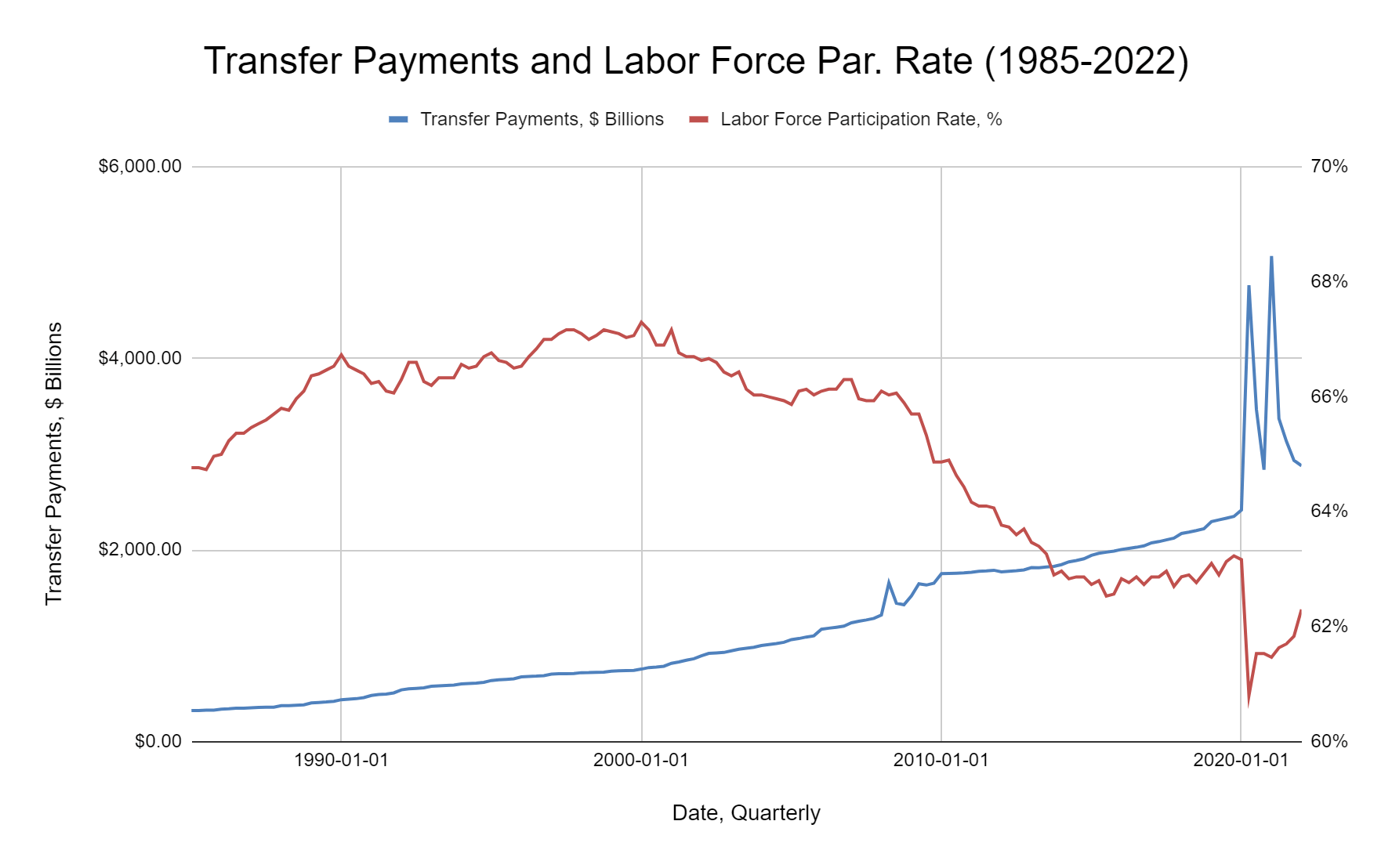The Effect of Transfer Payments on the Labor Force Participation Rate

Photo Credit: Getty
In the The Wall Street Journal last Thursday, James Piereson of the Manhattan Institute laid out the case for the relationship between a shrinking labor force participation rate and low levels of economic growth. Piereson explains that over the past six decades, the average annual GDP growth rate has fallen from 4.5 to just around 2 percent, a reduction of more than half. He also lays out the long-term reduction of the labor force participation rate:
The percentage of the adult population working or actively looking for work increased steadily from 59% in 1965 to 67% in the late 1990s, followed by a steady drop-off to 62% in 2022.
Piereson argues that the reduction in labor force participation can be explained by baby boomers aging out of the workforce, as well as reduced participation from men. He also describes how the calculation of the unemployment rate hides the problem the labor market is facing:
Today’s low unemployment rate obscures the substantial decline in workforce participation in recent years, as “dropouts” from the workforce aren’t included in the unemployment figures. If they were added, as some analysts think they should be, then the real unemployment rate wouldn’t be 3.6% but more like 9% or 10%.
Piereson concludes that there are no easy solutions to the problem, but that rising wages and an improved immigration system could draw more workers into the labor force.
While all that may be true, Piereson fails to mention one clear driver of the falling labor force participation rate: increased government transfer payments. As can be seen in the graphs below, there is a meaningful correlation between the total transfer payments from the government and the labor force participation rate.
As transfer payments have increased, the labor force participation rate has fallen. This relationship was clearly demonstrated in the COVID-19 pandemic, which saw huge increases in government payments to citizens. This logic bears out intuitively: When people are receiving payments for not working, why would they choose to work?
Economist Stephen Moore recently testified on this subject before Congress:
One of the worst mistakes in the Recovery Act was the supplemental unemployment benefits … with the supplemental UI [unemployment insurance], plus expanded food stamps, plus rental assistance, plus expanded Medicaid, and the evisceration of the Clinton-era work-for-welfare reforms, families with two unemployed parents and two kids could receive a tax-free income of $100,000 or more. … [S]tates which canceled the early UI benefits early had much lower unemployment rates. … University of Chicago economist Casey Mulligan and I published a paper last year showing that if we had reduced the payroll tax rather than increased unemployment benefits, we would have had 3 million more Americans working throughout 2020, 2021, and through the first half of 2022.
If policy makers want to increase the labor force participation rate, which in turn would drive economic growth, they should work to reduce transfer payments.

